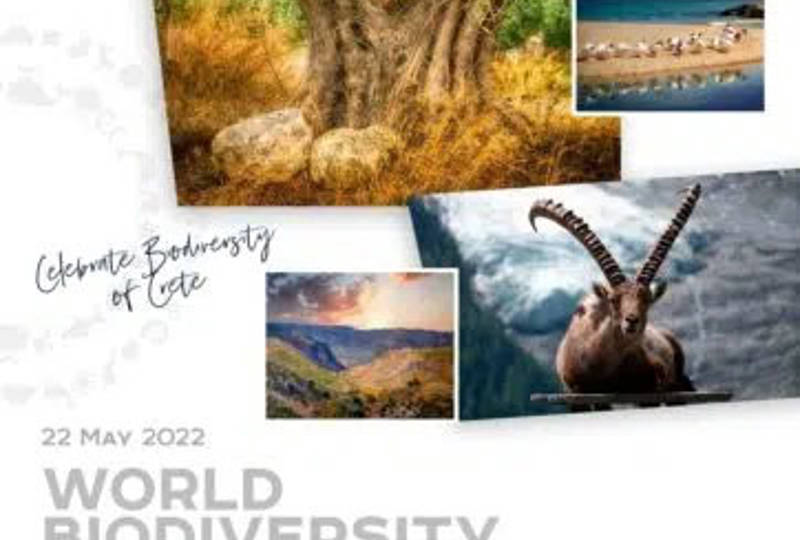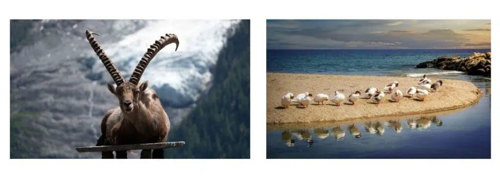20/05/2022

Greece is a place with very rich biodiversity. We are proud to welcome our guests to such a beautiful country. Aldemar Resorts Group hotels are located in two regions, Crete and Ilia, particularly renowned for their magnificent landscapes, but also for the abundance and rarity of their flora and fauna.
Today, with its festive character, is the perfect occasion to understand and raise awareness of biodiversity issues. The diversity and balance of all species of plants and animals is an essential issue and plays the most important role in the sustainable development of the planet. Human activity has created deep rifts in the biodiversity edifice as many animal and plant species have either disappeared or are threatened with extinction in recent years. The main reasons for the threats to biodiversity are intensive farming, industrial development, overexploitation of natural resources, pollution and global climate change.
At Aldemar Resorts Group for over 30 years we have been intensively taking action to protect the environment and ecosystems, ensure greater control and management to reduce impacts through activities, raise awareness, engage the community and mobilize resources.
The Biodiversity of Crete
Crete is characterized by an extraordinary abundance of living beings. Although it is an island far from the mainland of the country, it is home to a large number of flora and quite diverse fauna. Among other things, Crete is famous for its aromatic plants and herbs that are found all over the island.
Flora of Crete
The flora of Crete includes the thalassochedroses, which are among the protected species of the island. They form some of the most important ecosystems, the cedar forests that grow on the dunes. The ecological importance of the dunes is enormous in terms of biodiversity and the existence of rare animals and plants. Due to the continuous degradation of these fragile ecosystems by humans, these areas have been included in protection programs. The most common acts that contribute to their destruction are breaking branches, camping under their shade resulting in the destruction of new shoots and cleaning up “dry branches”.
The Theophrastus palm, named after the father of botany Theophrastus, is also known as the Cretan palm or Cretan date palm. It is a rare Aegean endemic species that grows throughout Crete. The island has the largest palm forest of the species in Europe.
In Crete there are four types of tulips: the Cretan tulip, the rocky tulip, the red Cretan tulip and the Golimi tulip. The Cretan tulip is the most widespread species on the island and grows only in Crete. The red tulip is an endemic species of tulip that grows almost exclusively on the small plateau of Yios Kampos in Rethymnon. The species has been classified as protected by presidential decree. The red tulip Golimi is extremely rare, since its population is limited to a small area on the peninsula of Gramvousa, near Falassarna.
On the island of Crete there are also many monumental century-old olive trees, as they are called, because of their history and are protected by the state.

Apart from the mentioned species there is a very long list of plants that can be found on the island. Briefly, there are the carob, the dittany, the Cretan cyclamen, the manousakia, the anemones, etc.
Fauna of Crete
Birdwatching is an attraction for many visitors every spring and autumn. Crete hosts a large number of migratory birds in its wetlands. At the same time, birds of prey can be found on the island all year round, attracting great interest.
Crete is also home to the Cretan wildcat or furogatos, which is an endemic subspecies of the European wildcat. There is a real danger of its extinction mainly because of the poisons placed by humans. It can also mate with cats and hybrids can result.
The Cretan goat, known as kri-kri, is an endemic mammal, which is a subspecies of the Aegas. Several species are found in the mountains of Greece and Europe and almost all of them are endangered due to illegal hunting. The Cretan goat is the largest wild land animal found in Crete today.
Crete has isolated forests and thousands of small and large caves. This makes it an ideal place for bats. Many species of bats have been identified in Crete and make up over 50% of the island’s mammals. Nominally some of the species are: the night-nosed bat, the tranorhinolophos, the micro-nolophos, the mountain bat and the dwarf bat.

The list of the fauna of Crete is undoubtedly long. Briefly, some of the mammals found on the island are the Georgian horse, the zourid, the wild rabbit, the Cretan hippopotamus, etc. Also, some of the marine mammals found in the waters of Crete are the blow whale, the humpback whale, the Mediterranean seal and many species of dolphins. The island’s fauna is rich in amphibians and reptiles. In summary, we can find the Cretan frog, the green toad, sea and land turtles, etc. We conclude with a reference to the birdlife of the island and find golden eagles, partridges, peregrine falcons, etc
Offers on hotel rooms delivered directly to your inbox